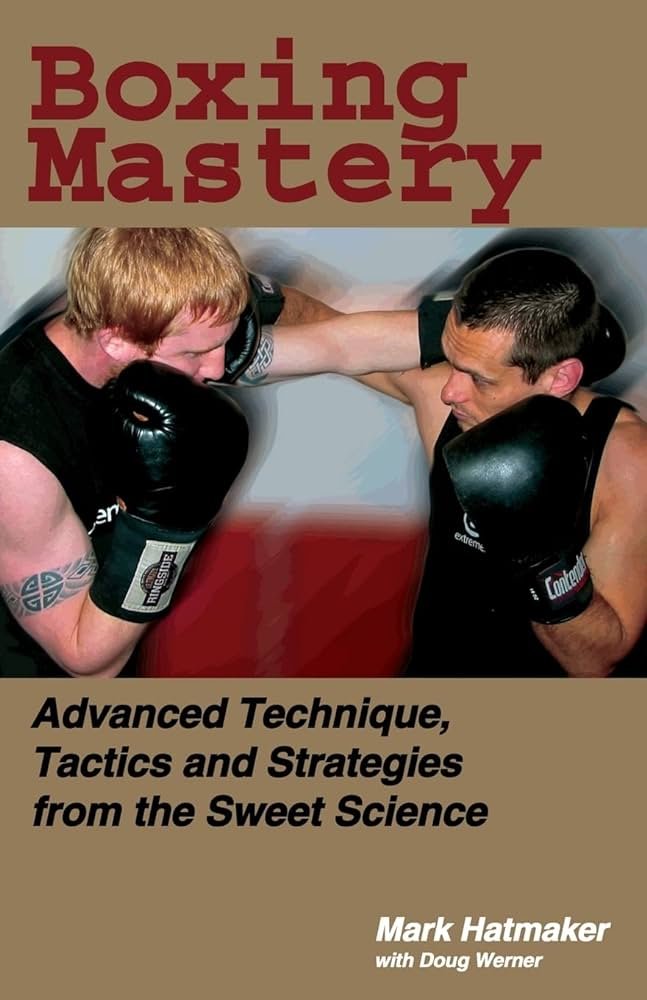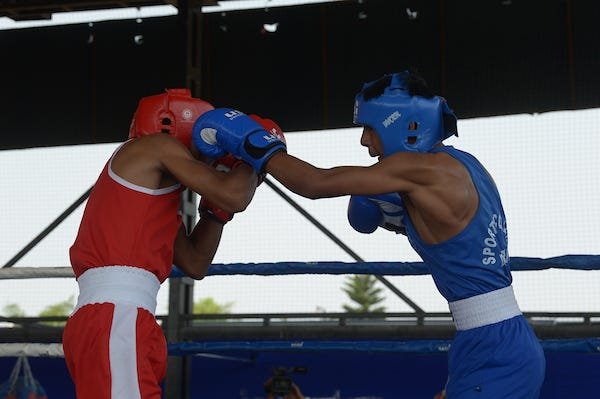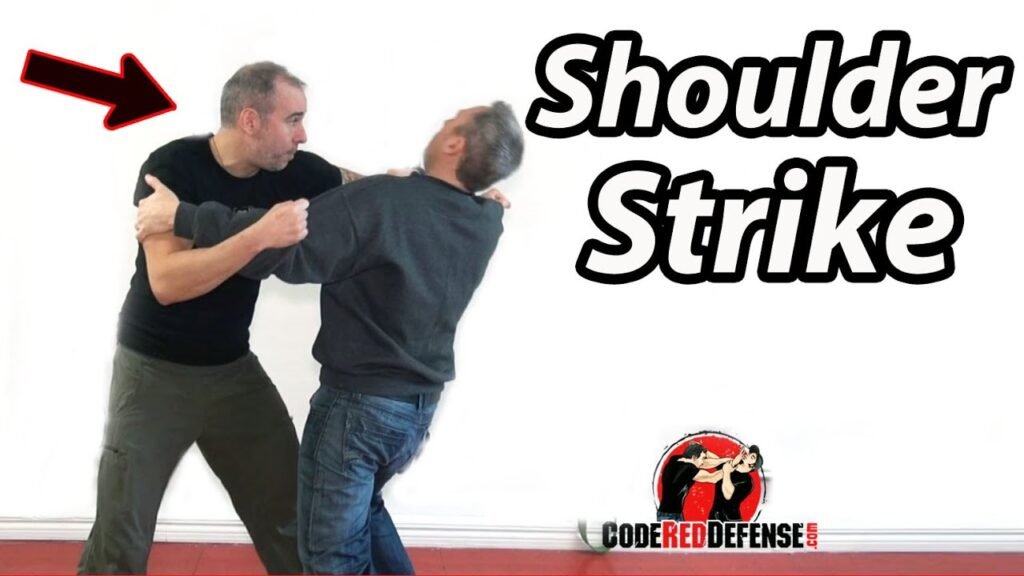In the world of close combat techniques, one skill that shouldn’t be overlooked is the art of advanced shoulder strikes. Whether you’re an experienced martial artist or just starting to explore self-defense, mastering these powerful strikes can provide you with an effective tool in close-range combat situations. With a focus on technique and precision, this article will guide you through the intricacies of executing advanced shoulder strikes, enabling you to enhance your combat skills and confidently face any opponent. Get ready to elevate your close-range combat game and unleash the power of your shoulders!

Understanding Shoulder Strikes
Shoulder strikes are a technique utilized in various martial arts disciplines, including boxing, MMA, Muay Thai, and Krav Maga. This powerful and effective technique involves striking your opponent with your shoulder, utilizing your body weight and momentum to deliver impactful blows. Understanding the definition and benefits of shoulder strikes, as well as the keys to performing them effectively, is essential for any practitioner looking to master this technique.
Definition of Shoulder Strikes
Shoulder strikes involve striking your opponent using the force generated from your shoulder and body movement. It differs from traditional punches or kicks as it utilizes a different part of the body. By effectively positioning and engaging your shoulder, you can generate significant power and target specific areas, making shoulder strikes a versatile technique.
Benefits of Shoulder Strikes
Shoulder strikes offer several benefits for both self-defense and martial arts training. Firstly, they allow you to generate significant power in close-quarter combat situations, where punches or kicks may be less effective. The shoulder’s bony structure provides a solid impact surface, making it an ideal weapon. Additionally, shoulder strikes can be a surprising and unexpected technique, catching your opponent off guard and enabling you to gain the upper hand. They also utilize the element of surprise, making them a valuable technique in self-defense scenarios.
Keys to Effective Shoulder Strikes
To perform shoulder strikes effectively, several key factors must be considered. Firstly, your stance and body positioning are crucial. Maintaining a solid stance with your feet shoulder-width apart and your knees slightly bent allows for a stable base. Your body should be slightly turned, with your lead shoulder facing the target. This positioning enables you to generate maximum power while maintaining balance and stability.
Generating power in shoulder strikes relies on utilizing your body weight and momentum. By rotating your hips and driving forward with your legs, you can transfer energy through your core and into your shoulder. Proper weight shift and timing are crucial for effective strikes.
Targeting specific areas during shoulder strikes can maximize their effectiveness. Whether aiming for the ribs, chest, or head, understanding the vulnerable areas on your opponent’s body allows you to direct your strikes with precision and increase the chances of success. Practice targeting different areas to enhance your skills and adaptability in real-life situations.
Techniques for Close Range Shoulder Strikes
Close range shoulder strikes require a good understanding of technique and body mechanics. By mastering these techniques, you can enhance the power and effectiveness of your strikes.
Stance and Body Positioning
Proper stance and body positioning are essential for executing close-range shoulder strikes effectively. Start by assuming a balanced and stable stance with your feet shoulder-width apart. Distribute your weight evenly between both legs, keeping your knees slightly bent to maintain mobility and stability. Position your body at an angle, with your lead shoulder facing the target. This stance allows you to generate power from your core and transfer it through your shoulder.
Generating Power
Generating power in close-range shoulder strikes involves utilizing your entire body, not just your shoulder. The power is derived from the rotational movement of your hips, the drive from your legs, and the engagement of your core muscles. Initiate the strike by rotating your hips and driving forward with your lead leg. As you execute the strike, engage your core muscles and transfer the power through your shoulder. This coordinated movement generates maximum force and impact.
Using Your Body Weight
To optimize the effectiveness of your shoulder strikes, it’s crucial to utilize your body weight properly. Shift your weight onto your lead foot as you initiate the strike, allowing you to transfer your body weight into the strike. This transfer of weight adds power to your shoulder strike, increasing its impact. Remember to maintain balance and stability throughout the movement, as an unbalanced strike may compromise your effectiveness and leave you vulnerable to counterattacks.
Targeting Specific Areas
Knowing where to target your shoulder strikes is vital for maximizing their effectiveness. Different targets yield different results and create various openings for further attacks. When targeting the torso, aim for the ribs or chest area to disrupt your opponent’s breathing and potentially cause damage to vital organs. When aiming for the head, target the jaw, temple, or chin to disorient and stun your opponent. Remember to strike using the part of your shoulder that aligns with the desired target, maximizing the impact and minimizing the risk of injury to yourself.
Types of Advanced Shoulder Strikes
Once you have mastered the fundamentals of close-range shoulder strikes, you can explore more advanced techniques that offer additional versatility and strategic options. These advanced shoulder strikes can surprise your opponent and can be highly effective in various combat situations.
Cross Shoulder Strike
The cross shoulder strike involves striking diagonally across your body using your rear shoulder. Start by turning your hips and shoulders away from the target. As you rotate your body, quickly twist your torso back towards your opponent, generating power in your rear shoulder. Follow through with the strike by driving forward with your rear leg and shoulder, allowing the rotational movement to translate into forceful impact. The cross shoulder strike is particularly useful for attacking opponents from different angles, catching them off guard and increasing the likelihood of success.
Upward Shoulder Strike
The upward shoulder strike is a powerful technique used to target an opponent’s chin, jaw, or solar plexus area. Start by positioning yourself slightly lower than your opponent, allowing you to generate upward force. As you initiate the strike, drive your lead shoulder upward, using your legs and core to generate power. The upward motion can disorient your opponent and potentially knock them off balance. This technique is highly effective in close-quarters situations where traditional punches may be difficult to execute.
Downward Shoulder Strike
The downward shoulder strike is a devastating technique that targets the collarbone, sternum, or the top of the head. Start by positioning yourself slightly above your opponent, with your lead shoulder higher than their head. Drive your lead shoulder downward, utilizing the force generated from your legs and core. The downward motion adds gravity to the strike, increasing its impact. This technique can be used to disable or incapacitate your opponent, allowing you to gain a significant advantage in a combat situation.
Rotational Shoulder Strike
The rotational shoulder strike combines elements of the cross, upward, and downward shoulder strikes. It involves a fluid and circular motion that targets different areas of your opponent’s body. Start by rotating your hips and shoulders away from the target, similar to the setup for the cross shoulder strike. As you rotate back towards your opponent, initiate the upward or downward shoulder strike depending on the desired target area. This versatile technique allows you to adapt to different scenarios and can catch your opponent off guard.
Importance of Proper Body Mechanics
Performing shoulder strikes with proper body mechanics is crucial for maximizing their effectiveness and minimizing the risk of injury. Focusing on proper alignment, engaging core muscles, and maintaining balance and stability ensures that your strikes are powerful, accurate, and safe.
Proper Alignment
Proper alignment starts with your stance and body positioning. Ensure that your feet are shoulder-width apart and maintain a slight bend in your knees. Your body should be slightly turned, with your lead shoulder facing the target. Throughout the strike, maintain a straight and aligned spine, avoiding bending or arching your back. Proper alignment allows for efficient transfer of power, leading to more effective shoulder strikes.
Engaging Core Muscles
Engaging your core muscles is essential for generating power and stability in shoulder strikes. By activating your core, which includes abdominals, obliques, and lower back muscles, you create a solid foundation for generating force. As you initiate the strike, focus on tightening your core muscles to stabilize your body and transfer power from your legs to your shoulder. A strong, engaged core ensures optimal efficiency and control in executing shoulder strikes.
Maintaining Balance and Stability
Maintaining balance and stability throughout the strike is crucial for effective shoulder strikes. When generating power, it’s easy to lose balance or overcommit to the strike, leaving yourself vulnerable to counterattacks. Focus on evenly distributing your weight, keeping your body centered and stable. Keep your stance grounded and avoid excessive leaning or shifting that may compromise your stability. Maintaining balance ensures that you’re ready to defend or follow up with additional strikes effectively.

Conditioning and Strengthening Exercises
To excel in shoulder strikes, it’s important to condition and strengthen the muscles involved. Regularly incorporating specific exercises into your training routine can enhance shoulder mobility, strengthen the rotator cuff muscles, and improve overall upper body and core strength.
Shoulder Mobility Exercises
Maintaining proper shoulder mobility is essential for executing shoulder strikes with fluidity and minimizing the risk of injuries. Incorporate exercises such as shoulder rolls, arm circles, and shoulder stretches into your warm-up routine to improve mobility and flexibility. These exercises help loosen up the muscles, tendons, and ligaments in your shoulders, allowing for a wider range of motion during strikes.
Rotator Cuff Strengthening
The rotator cuff muscles play a vital role in stabilizing the shoulder joint and generating power during shoulder strikes. Incorporate exercises like external and internal rotations, shoulder raises, and resistance band exercises into your workout routine to strengthen the rotator cuff muscles. Strengthening these muscles can enhance your shoulder strike technique and reduce the risk of rotator cuff injuries.
Upper Body and Core Strength Training
To optimize the power and effectiveness of your shoulder strikes, it’s crucial to have a strong upper body and core. Include exercises such as push-ups, bench presses, dumbbell rows, planks, and Russian twists in your strength training regimen. These exercises target the chest, shoulders, arms, and core muscles, enhancing the overall strength and stability necessary for performing powerful and controlled shoulder strikes.
Training Drills for Shoulder Strikes
Training drills are essential for refining your shoulder strike technique and developing muscle memory. Incorporating a variety of training drills into your practice routine can improve your accuracy, speed, and timing.
Shadow Boxing with Shoulder Strikes
Shadow boxing is an excellent training drill for honing your shoulder strike technique. Visualize an opponent in front of you and practice executing various shoulder strikes, focusing on proper technique, power generation, and targeting specific areas. Incorporate footwork and movement to simulate real combat scenarios. Shadow boxing allows you to develop and refine your shoulder strike technique in a controlled environment, helping you become more comfortable and proficient with the movements.
Focus Mitt Drills
Focus mitt drills involve utilizing a training partner or coach holding focus mitts to simulate targets. This drill allows you to practice hitting specific areas with precision and accuracy. Your partner can call out combinations, forcing you to react quickly and strike with proper technique. Focus mitt drills help improve your speed, timing, and accuracy while providing a realistic training experience. Incorporate shoulder strikes into your focus mitt drills to enhance your overall striking ability.
Partner Training
Partner training drills are valuable for testing and applying your shoulder strikes in a controlled and dynamic environment. Practice different scenarios such as defending against grabs or holds, where shoulder strikes can be highly effective. Communicate with your training partner and discuss different attack patterns, allowing you to practice your shoulder strikes in realistic situations. Partner training provides an opportunity to fine-tune your technique, timing, and adaptability.
Bag Work
Bag work is an essential training method used to develop power, speed, and endurance in shoulder strikes. Practice striking a heavy bag, focus pad, or a speed bag while incorporating various shoulder strikes. Focus on generating power, maintaining proper technique, and hitting the target with accuracy. Bag work allows you to develop the explosive power necessary for effective shoulder strikes while also providing a great cardiovascular workout.

Common Mistakes to Avoid
While mastering shoulder strikes, it’s essential to be aware of common mistakes that can hinder your progress or compromise your technique.
Relying solely on arm strength
One of the most common mistakes in shoulder strikes is relying solely on arm strength. The power in shoulder strikes comes from utilizing your entire body, particularly your core, legs, and hips. Failing to engage these muscles and relying solely on your arm strength can make your strikes weak and ineffective. Focus on properly utilizing your body’s mechanics to generate maximum power.
Neglecting proper technique
Neglecting proper technique is a common mistake that can lead to inefficient and ineffective shoulder strikes. Take the time to learn and practice the correct form, ensuring that your strikes are executed with proper body alignment, weight transfer, and targeting. Neglecting technique can lead to injuries and missed opportunities to capitalize on the effectiveness of shoulder strikes.
Poor posture and body alignment
Maintaining proper posture and body alignment is crucial for maximizing the power and accuracy of your shoulder strikes. Poor posture, such as rounding your back or hunching over, can compromise your stability and reduce the effectiveness of your strikes. Focus on maintaining a straight spine, proper stance, and balanced weight distribution to optimize your strikes.
Application in Self-Defense or Martial Arts
Shoulder strikes have practical applications in both self-defense and various martial arts disciplines. Understanding how to effectively apply shoulder strikes in different scenarios is essential for their successful use.
Understanding Different Scenarios
In self-defense situations, shoulder strikes can be particularly effective when dealing with close-quarter combat scenarios or when an opponent is in close proximity. Understanding how and when to use shoulder strikes in different scenarios can enable you to defend yourself effectively and create opportunities for escape or further counterattacks.
Defending against Grabs and Holds
Shoulder strikes can be highly effective when defending against grabs and holds. By utilizing your shoulder to strike vulnerable areas such as an opponent’s ribs, chest, or face, you can create enough impact to disorient or weaken your attacker, giving you an opportunity to escape or neutralize the threat. Practicing shoulder strikes in various scenarios, including grabs and holds, enhances your ability to react quickly and effectively defend yourself.
Combining Shoulder Strikes with Other Techniques
Shoulder strikes can be seamlessly combined with other striking techniques, such as punches, kicks, or knee strikes, to create devastating combinations. The element of surprise and the unexpected angle of attack provided by shoulder strikes can catch your opponent off guard, allowing you to follow up with additional strikes or transitions to grappling techniques. By integrating shoulder strikes into your arsenal of techniques, you become a more well-rounded and adaptable fighter.

Training Progression and Tips
Mastering advanced shoulder strikes requires dedication, practice, and a well-structured training progression. Follow these tips to enhance your progress and optimize your training.
Start with Basic Strikes
Before progressing to advanced shoulder strikes, ensure that you have a solid foundation in basic strikes. Develop proficiency in fundamental techniques such as jabs, crosses, hooks, and uppercuts. Understanding the mechanics and principles behind these strikes will serve as a strong base for learning and mastering shoulder strikes.
Gradually Increase Intensity
As with any training, it’s important to gradually increase the intensity of your shoulder strikes. Start with slower and controlled movements, focusing on proper technique and body alignment. As you become more comfortable and proficient, gradually increase the speed and power of your strikes. The gradual progression allows your body to adapt to the demands of the movements, reducing the risk of injuries and maximizing the effectiveness of your training.
Seek Professional Guidance
To accelerate your progress and ensure that you are learning correct techniques, seek professional guidance from a qualified coach or instructor. They can provide valuable feedback, correct any mistakes, and guide you through proper training progressions. Professional guidance also helps you avoid bad habits or incorrect techniques that may hinder your progress.
Practice Regularly
Consistency is key in mastering advanced shoulder strikes. Regularly practice your techniques, drills, and conditioning exercises to develop muscle memory and maintain progress. Set aside dedicated training sessions to focus solely on shoulder strikes, allowing you to refine your technique and improve your overall skills. Regular practice ensures that you remain proficient and confident in utilizing shoulder strikes in various situations.
Conclusion
Mastering advanced shoulder strikes for close range is a valuable skill for self-defense and martial arts practitioners alike. Understanding the definition and benefits of shoulder strikes, as well as the keys to performing them effectively, provides a solid foundation for success. By incorporating proper body mechanics, conditioning and strengthening exercises, training drills, and gradually progressing in your training, you can become proficient in executing powerful and accurate shoulder strikes. Remember to always prioritize proper technique, seek professional guidance, and practice regularly to continuously improve your skills. With dedication and practice, you can master advanced shoulder strikes and add a versatile and effective weapon to your martial arts repertoire.

